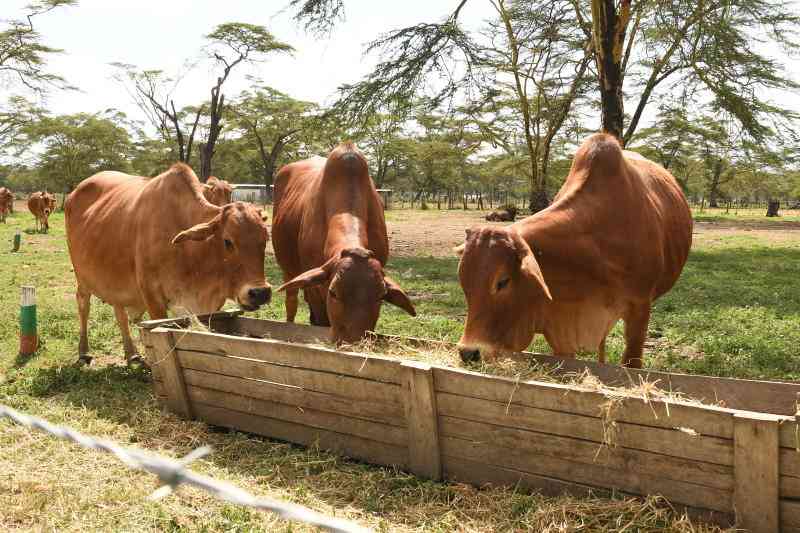Dear Daktari,
My name is John Njoroge from Matasia in Ngong. I am a dairy farmer keeping Freisian crosses under a semi-zero grazing system. Recently, one of my cows, which is a bit old, gave birth and immediately could not stand up. It also exhibited cold extremities and looked dull. I called my veterinary doctor who said the cow suffered from milk fever. Luckily, it was successfully treated and was back on its feet in no time. What could have led to this condition, and what should farmers do to prevent it?
John Njoroge,
Kajiado
Follow The Standard
channel
on WhatsApp
Thank you, John, for the question and sorry for the incident. Milk fever is a common disease in dairy animals after parturition. It is mostly nutritional or a result of poor management of cattle, but it is easily preventable.
Milk fever, or low calcium in the blood (hypocalcemia), is a calcium deficiency condition that occurs in dairy animals after calving. This is a critical time, with cows requiring a lot of calcium to be mobilised from the blood and bones, respectively, to meet biological needs at this specific time. During this time, the demand for calcium to support the fetus’s bone growth and the production of colostrum for the unborn calf is very high.
When this critical need is not met, the animal suffers milk fever, which is characterised by inability to stand (recumbency), lack of appetite and poor health.
Other clinical signs of milk fever include exhaustion, lack of appetite, and no ruminal movements.
The condition comes in two forms, namely the clinical milk fever, where the clinical signs are overt, with the affected animal not being able to stand and having a low temperature, contrary to the expected “fever.”
The sub-clinical form of the disease is common in older cows and will not overtly display the clinical signs, but will not perform optimally and will be prone to other diseases like mastitis, dystocia, uterine infections, uterine prolapse, displaced abomasum, endometritis and retained placenta, ketosis and subsequently decreased milk production.
Milk fever can be prevented in herds through well-planned strategies in terms of nutrition during the dry season and early lactation, as well as the overall management of cattle.
When this is done, it can greatly reduce the chances of milk fever and improve post-partum health, reproductive performance, and milk production.
To prevent milk fever, feed pregnant animals, which are about to give birth, on a low-potassium diet, such as maize silage-based, grass hay and cereal silage rations. Limit calcium intake to less than 100 g/cow/day and phosphorus intake to less than 45g/day for two to three weeks before calving.
Calcium supplementation through oral calcium boluses is not recommended for all cows, as the effects are temporary.
However, older, lame, or high-producing cows may benefit, while first-lactation and lower-producing cows might not. Your veterinary doctor, when called in time, will, in most cases, successfully treat milk fever.
This is one of the conditions that quickly responds to treatment, almost “miraculously” upon intravenous administration of calcium gluconate IV.
When this is done, the cow will stand up and start eating like nothing had happened, which explains what happened with your cow. This treatment is normally followed by the administration of two oral calcium boluses given 12 hours apart. However, the oral calcium bolus should not be administered if cows do not respond to the calcium IV treatment.
Cows that fail to rise after treatment with IV calcium are mostly those that have been down much longer, and normal muscular function has not been reestablished, requiring assistance to stand up.
Farmers should not administer calcium gluconate IV themselves but should seek the services of a qualified vet after diagnosis.
[Dr Othieno is a veterinary surgeon and the head of communications at the Food and Agriculture Organisation (FAO) Kenya. The views expressed here are not necessarily those of FAO but his own]
Follow The Standard
channel
on WhatsApp
By Dr Othieno Joseph


